As Australia’s second-largest city, Melbourne is known for its rich cultural life, beautiful parks, iconic laneways, and a pace of life that’s both energetic and easygoing.
People from all walks of life choose to move to Melbourne. Some come for world-class universities like the University of Melbourne and Monash, while others are drawn by job opportunities in industries like healthcare, technology, education, and the arts.
Families appreciate the abundance of green spaces, high-quality schools, and safe neighbourhoods, while sports fans are spoilt with year-round events like the AFL, cricket, and the Australian Open.
Foodies flock to the city’s multicultural dining scene, beach lovers enjoy easy access to coastal escapes like St Kilda, and art enthusiasts lose themselves in galleries, theatres, and live music.
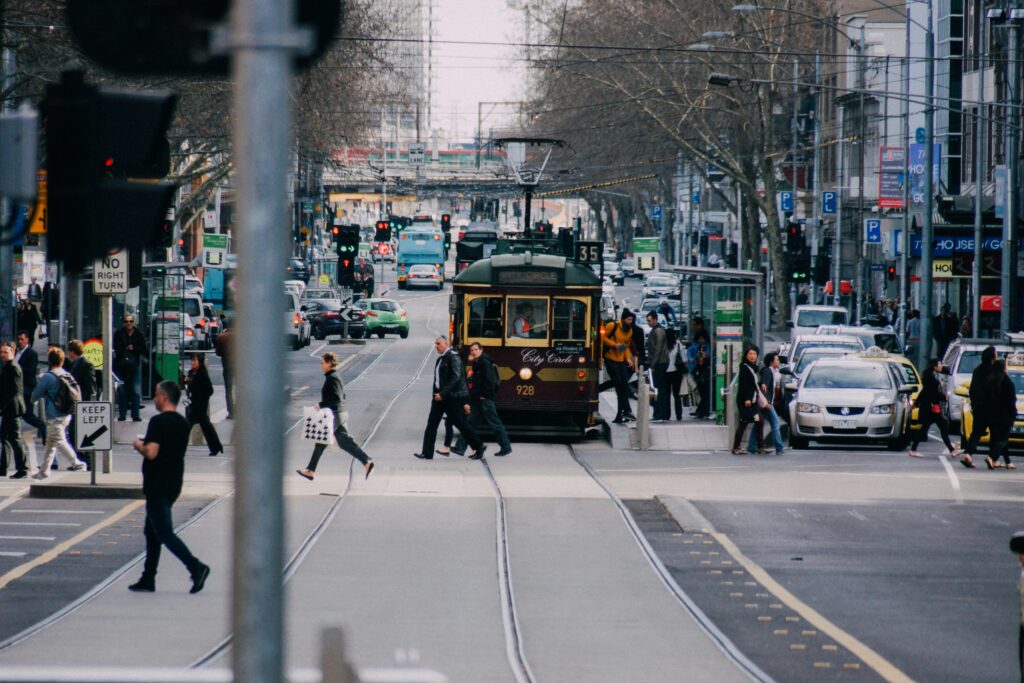
Melbourne is home to a beautifully diverse population—nearly one-third of residents were born overseas. Whether you’re from another Australian state or another continent, you’ll likely find someone who shares your language, culture, or interests.
But be prepared for the weather! Known for having “four seasons in one day,” Melbourne’s climate can change rapidly—so always pack a jacket, even in summer. It’s just part of the local charm.
Settling down and finding your feet
Suburbs for families, students, and young professionals
Melbourne’s suburbs each have their own personality. Families often settle in leafy areas like Glen Waverley, Balwyn, or Box Hill—known for good schools, parks, and quiet streets.
Students gravitate toward Carlton, Parkville, or Clayton for proximity to major universities and student housing. Young professionals favour inner-city suburbs like Richmond, Fitzroy, and South Yarra for their lively café scenes and easy access to the CBD.
Renting Basics (bonds, inspections & tenancy rights)
Renting in Melbourne usually starts with an inspection and an application. Once approved, you’ll pay a bond—usually equal to four weeks’ rent—which is held by the Residential Tenancies Bond Authority and returned if there’s no damage.
Tenants have strong legal protections in Victoria, and landlords must follow fair procedures for rent increases and maintenance. Always read your lease carefully and know your rights through Consumer Affairs Victoria.
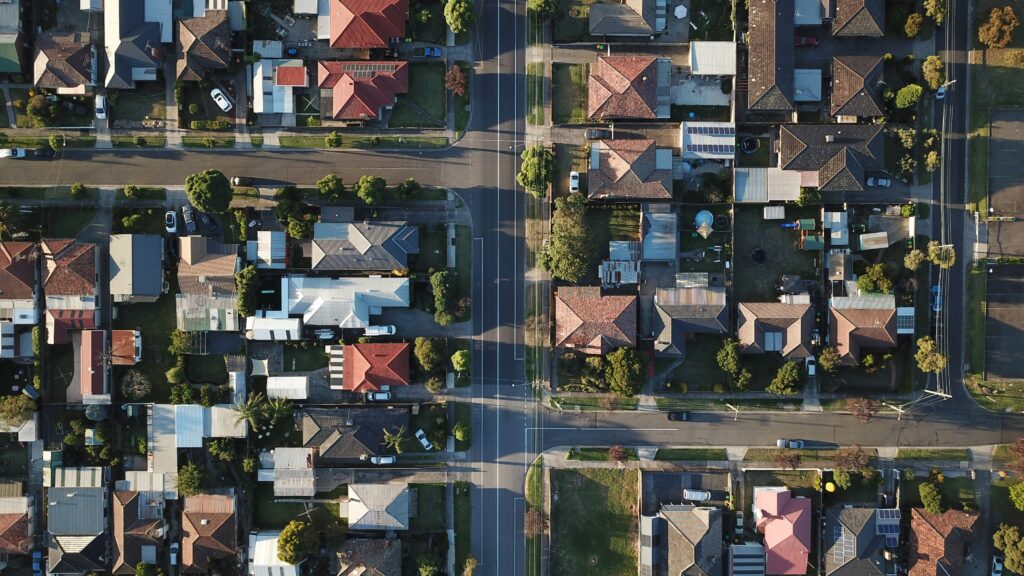
Tom Rumble / Unsplash
Transport and getting around
Melbourne has an extensive and reliable public transport network that makes getting around without a car easy. The city is well connected by trams, trains, and buses, and many areas are also great for walking or cycling.
Myki card system and public transport zones
To use public transport in Melbourne, you’ll need a Myki card, which you can top up and tap on when boarding. Students, concession holders, and seniors are eligible for discounted fares—so be sure to register your Myki accordingly.
Trams, Trains, Buses: How to use them
Trams are iconic in Melbourne and cover much of the inner city, including a Free Tram Zone in the CBD. Trains connect the suburbs to the city centre, while buses fill in the gaps.
Use the PTV (Public Transport Victoria) app or Google Maps to plan your route. Always tap your Myki when you start and finish your journey, except on trams within the Free Tram Zone.
Cycling and driving in Melbourne
Cycling is a popular and eco-friendly way to get around, with dedicated bike lanes throughout the city. Families often cycle in parks and along riverside trails, while students use bikes for short commutes. Driving is common in outer suburbs, but be aware of parking restrictions and toll roads.
Cost of living
Melbourne is generally more affordable than Sydney, but living costs can still vary depending on your lifestyle and location. Rent is usually the biggest expense, followed by groceries, transport, and utilities.
Families might spend more on larger homes and childcare, while students may opt for shared housing to keep costs low. Uni campuses often offer meal deals and access to affordable amenities.
Average rent, groceries, transport & utilities
As a rough guide, a one-bedroom apartment near the city might cost $450–$600 per week, while a three-bedroom family home in the suburbs could range from $500–$800.
Weekly grocery bills are around $80–$120 per person. A full-fare Myki pass for Zone 1 is about $5 per day, and basic utility bills (electricity, gas, water, internet) average $250–$350 per month for a small household.
Tips for budgeting (student discounts, second-hand shops)
Budgeting wisely makes a big difference. Students can save using UniDays, Student Edge, and concession Myki cards.
Families benefit from bulk buying at Aldi or markets like Queen Victoria Market. Many entertainment venues also offer family passes or free entry for kids during school holidays.
Navigating daily life
Weather and what to expect
Melbourne’s weather is famously unpredictable, with sunny skies one minute and a sudden downpour the next. Summers are warm and dry, while winters are cool and often grey. Spring and autumn bring beautiful colours—but also big temperature swings.
Whether you’re heading to uni, the beach, or a weekend footy match, always check the forecast before leaving the house.
Four seasons in one day explained
The phrase “four seasons in one day” isn’t just a joke—it’s a way of life in Melbourne. The city’s location between hot inland regions and the cool Southern Ocean causes fast-changing weather patterns.
It’s common to experience sunshine, wind, rain, and a temperature drop all in one afternoon, especially in spring and autumn.
How to dress and prepare
Layering is key to dressing for Melbourne’s climate. Always carry a light jacket or umbrella, even in summer. Kids walking to school or playing outside should be sun-safe in the morning and have a jumper ready for cooler afternoons.
Shopping and essentials
Melbourne offers everything from big-name supermarkets to niche specialty stores. Whether you’re doing your weekly grocery run, buying baby supplies, or grabbing last-minute snacks between classes, shopping is easy and accessible across most suburbs.
Supermarkets (Coles, Woolies, ALDI)
The main supermarket chains—Coles, Woolworths (Woolies), and ALDI—are found in most suburbs and shopping centres. ALDI is known for low-cost basics, while Coles and Woolies offer a wider variety, often with weekly specials.
Most supermarkets have extended hours, making them convenient for families and working professionals alike.
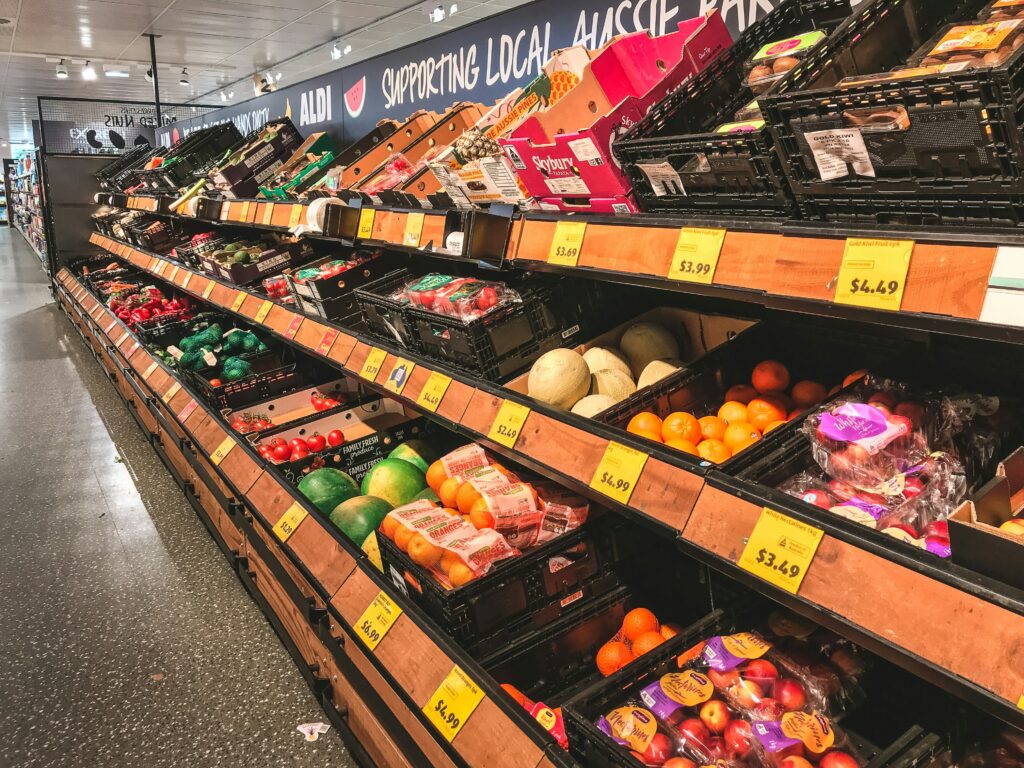
Farmers markets and Asian/ethnic grocery stores
For fresh produce, artisan goods, and a taste of local life, Melbourne’s farmers markets are a great choice—especially for families looking for weekend outings.
International students and migrants will also find plenty of Asian, Middle Eastern, African, and European grocery stores in suburbs like Springvale, Footscray, Dandenong, and Box Hill.
Shopping hours
Most shopping centres and supermarkets are open 7 days a week, with late-night trading (usually until 9pm) on Thursdays and Fridays.
On Sundays, shops open a little later and close earlier. Public holidays, however, may come with reduced hours or full closures—so it’s worth checking ahead, especially around Christmas and Easter.
Healthcare
Australia has a strong healthcare system, and Melbourne offers easy access to GPs, clinics, specialists, and hospitals. Families benefit from maternal health services. For peace of mind, it’s good to register with a GP near your home early on.
If you’re an Australian citizen, permanent resident, or eligible migrant, you can access free or subsidised healthcare through Medicare.
This includes visits to bulk-billing doctors (who don’t charge out of pocket), hospital care, and some prescriptions. Make sure to apply for a Medicare card as soon as you arrive.
How to Find GPs and bulk billing clinics
Many clinics across Melbourne offer bulk billing, which means no cost for Medicare card holders. Look for signs that say “bulk billing available” or search on health websites like HotDoc or Healthshare. Families should find a family GP, while students may want to choose a clinic near their campus.
Emergency services
In case of a medical emergency, call 000 for an ambulance. Public hospitals like Royal Melbourne, Monash Medical Centre, and the Royal Children’s Hospital provide emergency care 24/7. For non-urgent help after hours, you can also call Nurse-on-Call (1300 60 60 24) for free medical advice.
Community, culture and social life
Melbourne’s multicultural vibe
Melbourne is a vibrant melting pot of cultures, with over a third of its population born overseas. This cultural diversity is reflected in the city’s food, festivals, and everyday life. From the bustling laneways serving global cuisine to the wide range of cultural festivals, Melbourne embraces the richness of its multicultural communities.
Food, festivals, language diversity
Food is a big part of Melbourne’s multicultural identity. You can enjoy everything from delicious dumplings in Chinatown to Middle Eastern pastries at Victoria Street’s Richmond precinct. The city also celebrates various cultural festivals throughout the year, such as the Moomba Festival, Chinese New Year, and the Indian Diwali Festival.
Making friends and finding community
Moving to a new city can be challenging, but Melbourne offers plenty of opportunities to meet new people. For families, local playgroups and parent-child classes are a great way to meet others.
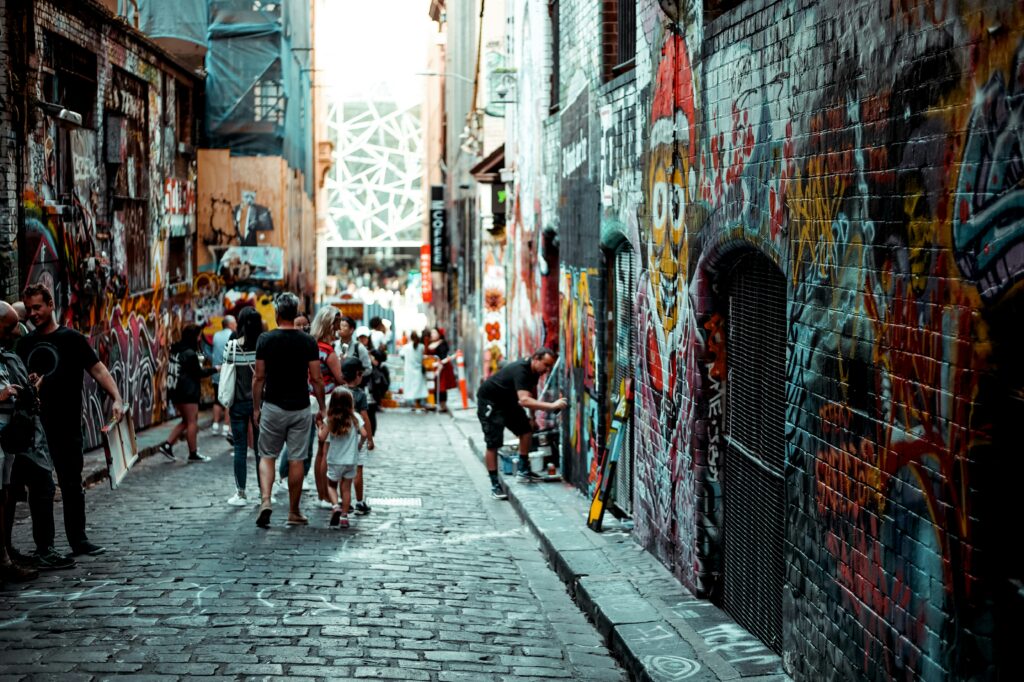
Students and young professionals can connect through Meetup groups, which cater to a wide variety of interests—whether you’re into tech, art, or sports. Volunteering is another great way to get involved in the community and give back, while building connections with people from all walks of life.
Meetup groups, hobby clubs, volunteering
Whether you enjoy hiking, cooking, or tech, Melbourne has a Meetup group for nearly every interest. These informal gatherings are an easy way to meet like-minded people.
Many newcomers also choose to volunteer as a way of integrating into the community, with opportunities at local charities, cultural organisations, and events. Volunteering is a great way to build connections while giving back to the city that’s welcoming you.
Education and learning
Melbourne is home to some of Australia’s top educational institutions, from primary and secondary schools to world-renowned universities and vocational training organisations.
Families have the option of choosing between public and private schools, with zoning rules that dictate where children can attend based on where they live. For international students, Melbourne offers a wide range of universities and TAFEs.
Schools (public vs. private)
Public schools in Melbourne are highly regarded, and many offer specialized programs such as language immersion or academic excellence. However, families often consider private schools for smaller class sizes or religious affiliation.
Zoning plays a role in where children can attend public schools, and it’s important to check the local school catchment area before settling on a location. You can visit the Department of Education’s website to check zoning information and school options.
Universities and TAFEs
Melbourne is Australia’s education capital, with top-ranking universities like the University of Melbourne, RMIT, and Monash University. TAFE (Technical and Further Education) institutions also provide vocational education and training, catering to students looking for practical skills in areas such as healthcare, IT, and trades.
Working and studying in Melbourne
Job market overview
Melbourne’s job market is dynamic, with key industries including healthcare, technology, education, finance, and construction. The city is also seeing growth in emerging sectors such as renewable energy, digital marketing, and creative industries like film and design.
Key industries and growing sectors
Melbourne is a hub for a range of industries. Healthcare is one of the largest sectors, with a high demand for doctors, nurses, and allied health professionals. The tech sector is rapidly growing, with startups and established companies alike seeking software engineers, developers, and digital marketers.
Creative industries, including advertising, graphic design, and video production, also offer job opportunities. In addition, sustainability and green energy initiatives are increasingly important, providing jobs in renewable energy, waste management, and environmental consulting.
Fair work basics, minimum wage, workplace protections
The Fair Work Act sets out the minimum wages and conditions for workers in Australia. As of 2024, the national minimum wage is around $24.10 per hour, or $915.90 per week before tax. Employees are entitled to benefits such as paid annual leave, sick leave, and public holiday pay.
Workplaces are also required to follow strict safety standards and must not tolerate bullying or harassment. If you experience any issues, you can contact Fair Work Ombudsman for advice and support.
Studying in Melbourne
Melbourne is home to some of Australia’s top universities and is known for its international student community. Whether you’re studying at one of the major universities or attending a vocational training institute, Melbourne offers a high standard of education.
The city also provides a variety of student services, including accommodation assistance and career counseling. Melbourne’s vibrant student life includes cultural events, food festivals, and sports.
Student services, support networks & part-time work
Most universities in Melbourne offer extensive student support services such as academic assistance, mental health counseling, and career development programs. International students can also access information about visa conditions, legal support, and accommodation.
For those seeking part-time work, universities often have dedicated job boards and career fairs. Popular part-time jobs for students include retail, hospitality, and office support roles. Volunteering and internships are also great ways to gain local work experience.
Fun and exploration
Top attractions
Melbourne offers a mix of free and paid attractions that cater to all interests. Federation Square, a modern cultural precinct, is a must-see for newcomers. It’s home to the Australian Centre for the Moving Image, the Ian Potter Centre, and hosts various events and exhibitions.
Art lovers can enjoy NGV International, the largest public gallery in the southern hemisphere, and ACMI. The Royal Botanic Gardens is another beautiful, free outdoor space perfect for relaxing or enjoying a picnic, while museums like Melbourne Museum and Scienceworks offer a deeper dive into Australia’s culture and history.
For art enthusiasts, the National Gallery of Victoria offers world-class collections and exhibitions.
If you’re after something more relaxing, the Royal Botanic Gardens is perfect for a peaceful day outdoors, and entry is free.
Melbourne also has plenty of paid attractions such as Melbourne Museum and Scienceworks, which are fantastic for families and curious minds alike.
Day trips and nature
Melbourne is surrounded by stunning natural attractions, perfect for day trips. Great Ocean Road is a scenic drive offering breathtaking views of the coastline, including the famous Twelve Apostles rock formations.
A visit to the Dandenong Ranges offers lush forests, walking trails, and charming villages. Phillip Island is another popular day trip, home to the famous Penguin Parade, where you can watch little penguins return to their burrows at sunset. For families or nature lovers, these day trips provide unforgettable experiences.
The Great Ocean Road is one of Australia’s most iconic coastal drives, taking you through dramatic cliffs, stunning beaches, and the famous Twelve Apostles.
Sport and events
Melbourne is Australia’s sporting capital, with events and matches throughout the year. AFL (Australian Football League) is a Melbourne tradition, with the Melbourne Cricket Ground (MCG) being the heart of the sport.
The Australian Open, held in January, is one of the world’s premier tennis events, drawing thousands of fans to Melbourne Park. Cricket is also a major sport, with the MCG hosting international test matches during summer.
Beyond sports, Melbourne hosts numerous festivals throughout the year, celebrating food, music, art, and culture, making it a vibrant destination year-round.
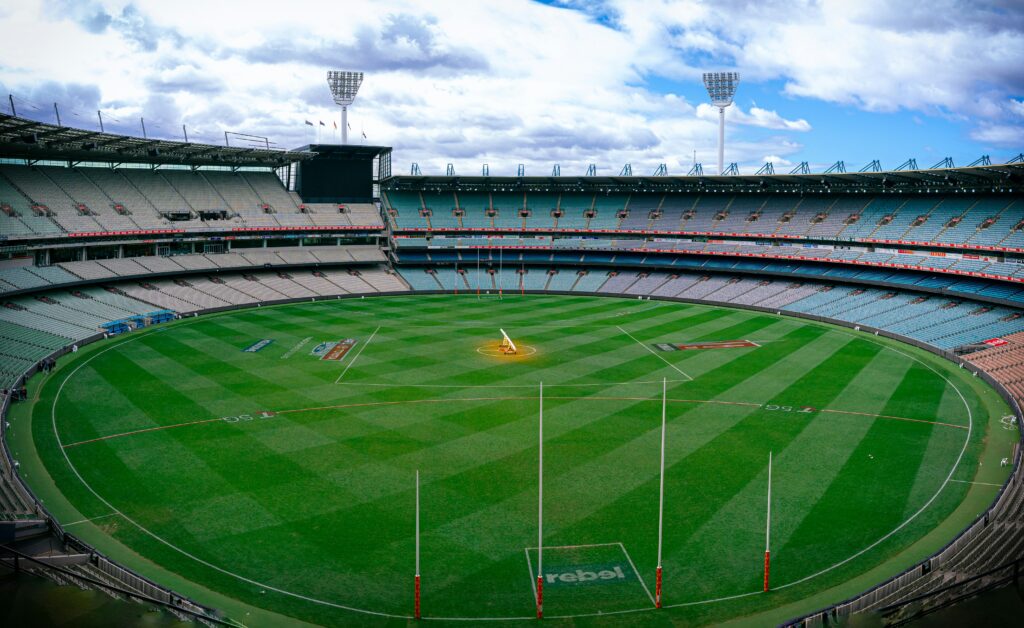
Tyson Bennett / Unsplash
AFL, Cricket, Tennis (Australian Open), Festivals
For sports fans, AFL is a Melbourne institution, with games played throughout the season at the MCG and Marvel Stadium. Cricket lovers can enjoy the annual Boxing Day Test at the MCG in December.
Tips for a smooth transition
Things people wish they knew earlier
Many newcomers to Melbourne often wish they knew more about the high cost of living, especially when it comes to housing and transport.
Rent can be steep, particularly in central areas, so it’s essential to budget carefully. The weather can also be unpredictable, so it’s wise to dress in layers to cope with Melbourne’s famous “four seasons in one day.”
Additionally, navigating the public transport system, especially the Myki card system, can be tricky at first, but once you get the hang of it, it becomes second nature. Many newcomers also wish they had started exploring local communities and networking earlier to make new friends and feel more settled.
Legal tips for migrants
Understanding your visa conditions and residency options is crucial when moving to Melbourne. Make sure to keep track of your visa expiration date and be aware of any work restrictions, as breaching visa conditions can lead to penalties or even deportation.
For migrants looking to settle permanently, there are various pathways to residency, such as employer-sponsored visas, skilled migration visas, or the partner visa for those in relationships with Australian citizens.
Conclusion
Melbourne can feel like home with time, especially once you’ve settled into the rhythm of the city. While it may seem overwhelming at first, remember that many newcomers have successfully made the transition before you, and it gets easier with each passing day.
Embrace the diversity, explore the many attractions, and reach out to your new community—whether through social groups, local events, or volunteer opportunities. In time, you’ll find your niche in this vibrant city.